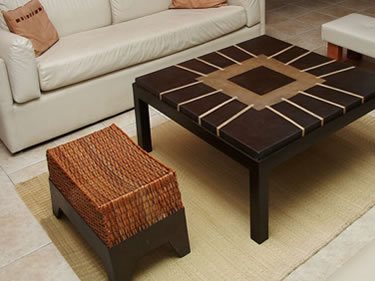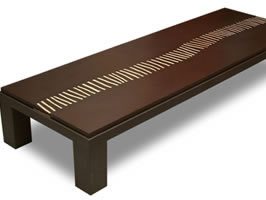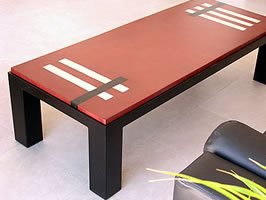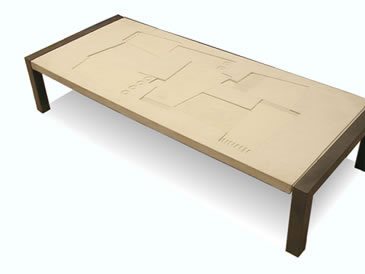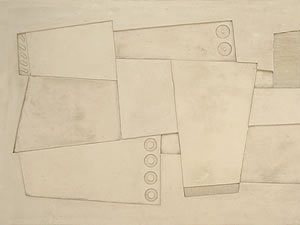- Staining Concrete
- Stamped Concrete
- Concrete Overlays
- Concrete Resurfacing
- Concrete Polishing
- Concrete Dyes
- Colored Concrete
- Indoor Concrete
- Concrete Floors
- Concrete Countertops
- Garage Floor Coatings
- Furniture, Sinks, Fire Bowls
- Basement Floors
- Outdoor Concrete
- Concrete Patios
- Concrete Driveways
- Concrete Pool Decks
- Outdoor Kitchens & Counters
- Outdoor Fireplace
- Concrete Walkways
- Concrete Pavers
- Concrete Walls
- Repair & Maintenance
- Foundation Repair
- Concrete Crack Repair
- Concrete Sealers
- Building with Concrete
- Concrete Homes
- Concrete Basements
- Decorative Concrete
Argentine Art Inspires Concrete Furniture Design
El Pasillo is a furniture design and production company from Buenos Aires, Argentina. Since 1995 they have designed, developed and produced steel and concrete furniture. "Our concrete designs are inspired by aborigine themes and our European cultural roots, but from "here and now", with a contemporary and not only folkloric aesthetics," says Graciela Petroni, designer and owner of El Pasillo.
One of their objectives is the investigation of unusual furniture materials, such as concrete, steel plate, expanded metal or raw-hide leather furniture.
"We believe that design process should be an exploration into the possibilities of a material and form; and also into possibilities of being another things, as metamorphose itself," explains Petroni. "Example: concrete is a hard, cold and rough material that nevertheless it can be warm, smooth, and silky. Concrete is a little unpredictable: no two pieces are exactly alike. But we like to work on that singularity that gives them a unique character."
Why Concrete?
"Some years ago I assumed the challenge to produce furniture pieces with a current use building material, but unused for furniture: concrete. Perhaps architect caused that I adopted without prejudices this material. It produces highly- resistant surfaces, as similar as stone, it allows to incorporate color; to include other materials such as paper, glass or stones pieces; and to obtain pieces of strong-plastic presence."
Characteristics and Techniques
Concrete has two important conditions: ductility and resistance. Diverse forms can be given it and, as a true liquid stone, it "copy" faithfully any texture on which it is molded. Color is obtained adding natural pigments to the mixture. Although weight is important, it is possible to solve this subject working with little thickness sections or light aggregates.
We have investigated and developed diverse techniques:
- Color paper inclusions: paper designs placed at bottom of the mold and are built-in to the mass of the concrete.
- Color concrete inclusions: portions of material with built-in color placed on an homogenous bottom. When setting, the set becomes monolithic.
- Prints: leaves and other elements placed at bottom of the mold. Concrete "copies" on the surface, as it happens with fossils.
- Bas-relief: geometric forms carvings.
The concrete is molded on steel plate molds, then it is polished and it allows for pieces with great smooth finish. "I fundamentally use it in surface elements: coffee tables, dining room tables, consoles, etc; complemented with simple forms and steel bases."
Inspiration
"My designs start off of which the material is and also of its possibilities of being other things, of metamorphose itself. There are pieces inspired by aborigine design and by the argentine conceptual art of forties (as in Earth Collection); or in vegetal forms, as in Delta Collection
Setting with concrete
"It exists a kind of prejudice about concrete furniture is only for outdoor use. In fact, they blends magnificently with upholstered elements and wood, by the contrast between textures and materials."
"Although very interesting effects can be obtained combining them with style furniture. As they have a noticeable artisan accent, they can "soft" a structured setting without it loses its contemporary character."
Submit Your Own Project Photos
Return to Concrete Furniture Projects
Read More About Concrete Furniture
